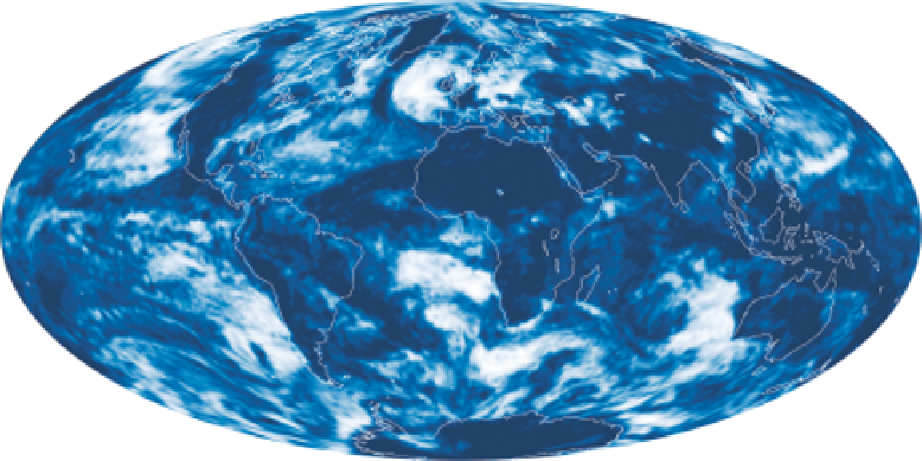Geoscience Reference
In-Depth Information
Plate 3.2
Low-altitude cloud fraction from CERES, 27 December 2008, showing ocean maxima.
Source: Jesse Allen, NASA.
the tropics than the equator. In the Northern
Hemisphere, this poleward displacement of the
zone of maximum heating is enhanced by the
effect of
continentality
(see B.5, this chapter), while
low cloudiness associated with the subtropical
high pressure belts is an additional factor. The
clear skies allow large annual receipts of solar
radiation in these areas. The net result of these
influences is shown in
Figure 3.9
in terms of the
average annual solar radiation on a horizontal
surface at ground level, and by
Figure 3.10
in
terms of the average daily maximum shade
temperatures. Over land, the highest values
(38-40
ways in which land and sea are able to profit from
it. Whereas water has a tendency to store the heat
it receives, land, in contrast, quickly returns it to
the atmosphere. There are several reasons for this.
A large proportion of the incoming solar
radiation is reflected back into the atmosphere
without heating the earth's surface. The propor-
tion depends upon the type of surface (see
Table
3.2
). A sea surface reflects very little unless the
angle of incidence of the sun's rays is large. The
albedo for a calm water surface is only 2 to 3
percent for a solar elevation angle exceeding 60
°
,
but is more than 50 percent when the angle is 15
.
For land surfaces, the albedo is generally between
8 and 40 percent of the incoming radiation. The
figure for forests is about 9 to 18 percent according
to the type of tree and density of foliage (see
Chapter 10C), for grass approximately 25 percent,
for cities 14 to 18 percent, and for desert sand
30 percent. Fresh snow may reflect as much as
90 percent of solar radiation, but snow cover on
vegetated, especially forested, surfaces is much
less reflective (30-50 percent). The long duration
of snow cover on the northern continents (see
°
S.
Hence, the mean annual
thermal equator
(i.e., the
zone of maximum temperature) is located at
about 5°N. Nevertheless, the mean air tempera-
tures, reduced to mean sea level, are very broadly
related to latitude (see
Figures 3.11A and B
).
°
C) occur at about 23
°
N and 10-15
°
5 Effect of land and sea
Another important control on the effect of
incoming solar radiation stems from the different


